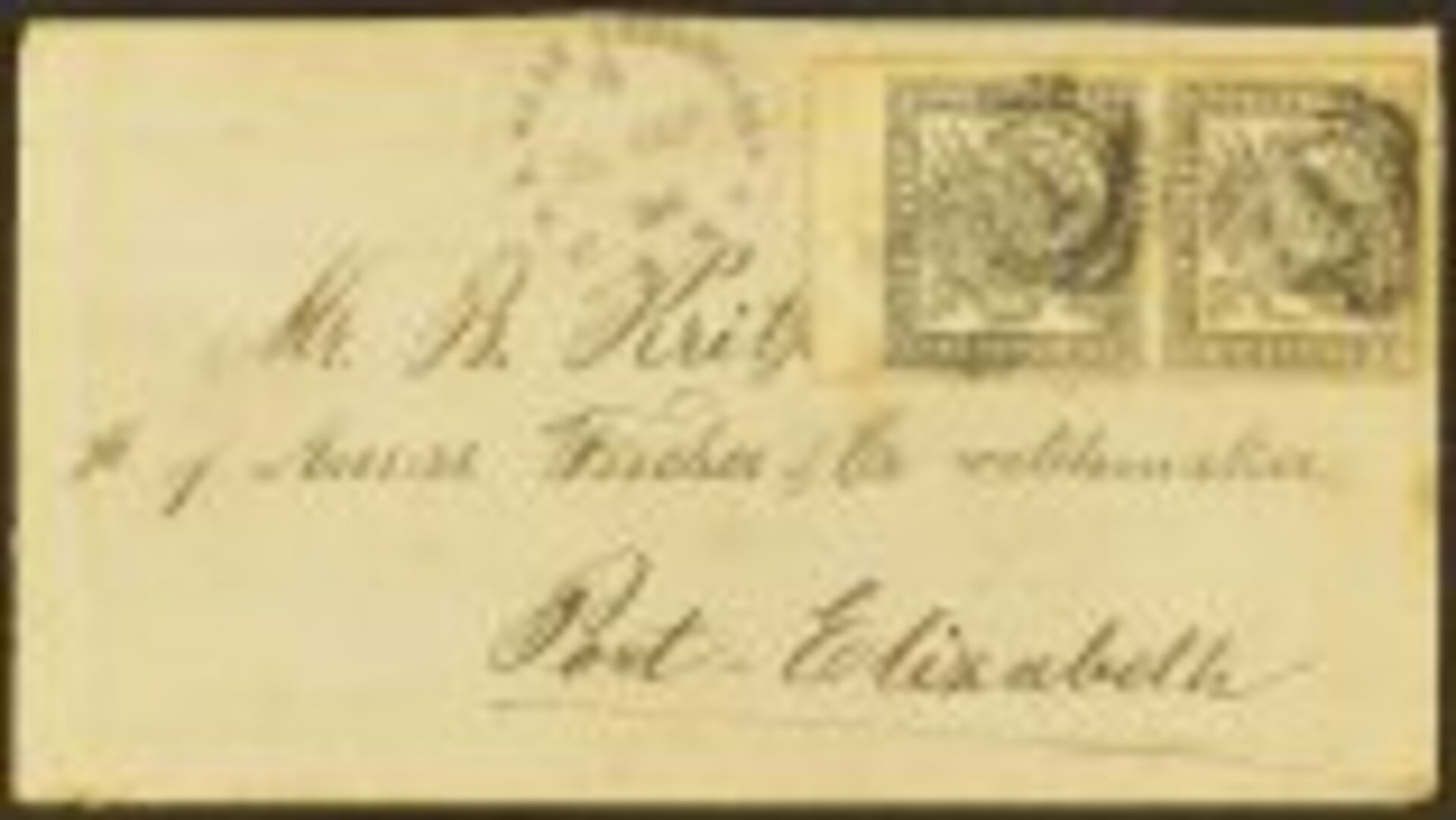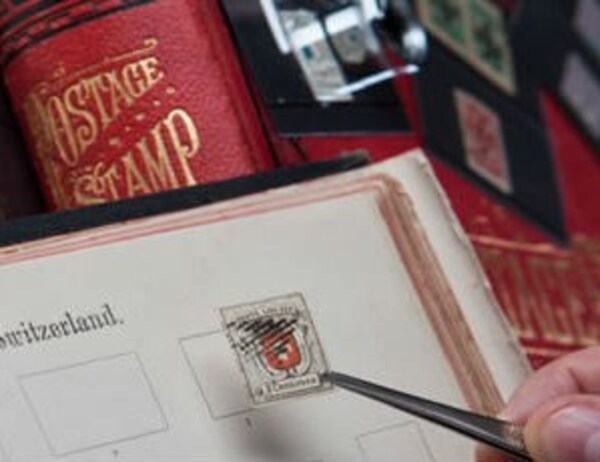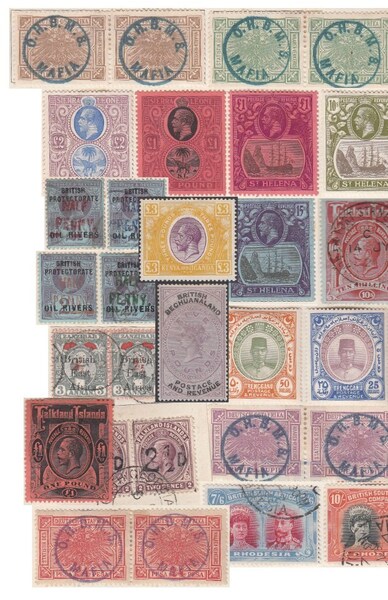This morning we held a staff meeting, part of which involved the reviewing of our website homepage and, stamp guys being stamp guys, we were soon discussing some of the lots we saw… and I do wish our clients could have listened in! Even if you don’t collect any of the lots featured below you might enjoy reading some of our ‘stampy’ comments, exchanged over coffee and biscuits…
Lot 7325 NETHERLANDS - "COVERS OF THE MONTH". What a brilliant lot! Six covers which were entered many years ago into the Netherlands Philatelists of California club “Cover of the Month” competition. A great concept as so many covers can be truly fascinating if fully explained and each cover here has a very good write-up. Take our magnifying function and have a look at each page – we particularly liked the wonderful animal illustrations on the 1945 advertising envelope!
Lot 7363 is a used block of six New Zealand 1864 1 shilling “Chalon” stamps postmarked in 1865. All blocks of these classic stamps are very scarce or downright rare – we have a feeling that this may be the largest known used multiple of this stamp. We probably see more than a hundred of the Chalon stamps before coming across a simple pair of even the cheapest low value, I’m guessing for even a penny or tuppence value there are several thousand stamps for every block of four… it’s hard to comprehend just how many more times rarer an intact block of six 1 shilling values is compared to six individual examples… if owning something no one else may have is your thing, you should place a bid on it!
Lot 7953 is an 1864 cover bearing a Cape of Good Hope triangular stamp. It’s easy to see why many collectors have assumed that the shape of this stamp was an innovation to allow more room for the address! It is not so, in fact the authorities at the Cape were simply concerned not to create confusion with stamps already issued by Great Britain! By 1853 very few countries had issued stamps and the wide possibilities we now know exist in stamp design were clearly impossible for the Post Office in Cape Town to realise, so they went with a triangle! For every intact cover, we see many hundreds of single stamps, yet our estimate…
Lot 7996. It’s difficult to appreciate how remote and backward Transvaal was back in 1884, devout and inward- looking the White population did not generate much mail, this cover from the goldfields to a watchmaker at Port Elizabeth which bears a couple of their rather primitive stamps is scarce, to say the least.
Lot 1291 is a re-joined pair of imperforate 1854 1 shilling Western Australia stamps. Eye- catching and very scarce, but we all wondered how they got back together? Did they ever spend time apart? Did a couple of collector- brothers, unable to decide who would keep the pair, wield the scissors only for the stamps to be reunited decades later? Or as during those old imperforate days it was not unheard of for strips of stamps to be prepared by the local Postmaster and then each very- nearly severed with a knife cut from its neighbour to allow for quick separation? So perhaps they were sold as a pair and finally came apart later? We’ll never know…
Lot 1662 is an 1851 6d imperforate from Nova Scotia which has never been used. It’s been ‘rebacked’, that is to say that it’s been sympathetically restored / strengthened by having new paper added to the back. Remember, back then stamps were often stuck into those early albums with their own gum, a pot of glue or perhaps even painters gauche! Don’t be surprised that these very old little bits of paper lost their gum or got their backsides damaged! We’ve described it as a “spacefiller” and offer it with a low estimate of around 3% of the SG catalogue value, not bad for something so rare, we thought.
Lot 2034 is a complete sheet of Heligoland stamps. Philatelically a strange place as most of the stamps show Queen Victoria’s head… yet they don’t look anything like other stamps issued in the Empire. Many collectors shy away from them as it’s believed that most stamps on the market are ‘forgeries’. This is not entirely correct, most stamps are in fact reprints using original plates, yet they are generally available for very little. The two highest values, the 1875 1m & 5m have never been forged or reprinted so are relatively safe to buy. What I like about this item is that it is a complete and rarely encountered intact sheet of originals, and as such is many times rarer than the sum of its parts. Individual hinged mint stamps catalogue £1300 in SG, the Michel catalogue (most collectors of this area are using the German catalogue) suggests over £6000 for fifty individual stamps.
There was much more of course, but who wants to hear our thoughts on next seasons soccer, the weather, holidays or the quality of our biscuits?
Happy hunting!
Vincent Green @VinceGreenStamp


 General
General
 General
General
 General
General